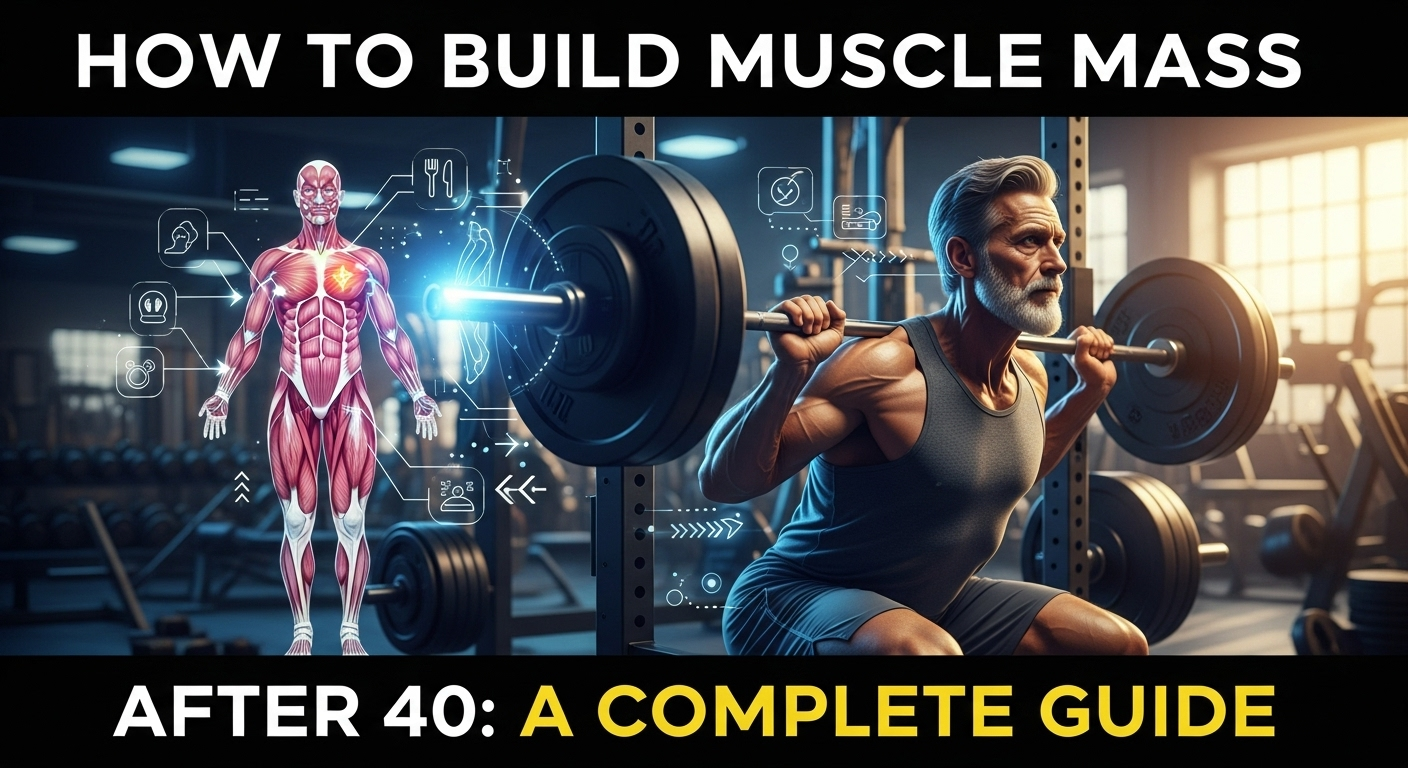Hitting your 40s often comes with a new perspective on health and fitness. The carefree metabolism of your 20s may feel like a distant memory, and you might notice that maintaining, let alone building, muscle is becoming a tougher challenge. You're not imagining it. Biological changes, including hormonal shifts and a natural decline in muscle synthesis, make the process different. However, the idea that your best physical years are behind you is a myth. The key to success lies in a smarter, more strategic approach. This comprehensive guide will show you exactly how to build muscle mass after 40, proving that age is truly just a number when armed with the right knowledge and dedication. Understanding the "Over 40" Challenge: Sarcopenia and Hormonal Shifts Before diving into the "how," it's crucial to understand the "why." Why does building muscle feel different after 40? The primary culprit is a process called sarcopenia, the age-related involuntary loss of muscle mass, strength, and function. This process can begin as early as your 30s and accelerates with each passing decade if left unchecked. It's a natural part of aging, but "natural" does not mean it's uncontrollable. Resistance training is the single most effective antidote to sarcopenia, sending a powerful signal to your body to preserve and build new muscle tissue. Hormonal changes also play a significant role. For men, testosterone levels, a key hormone for muscle protein synthesis, begin a slow and steady decline. For women, the approach of perimenopause and menopause brings fluctuations and an eventual drop in estrogen and progesterone. These hormones do more than just regulate reproductive health; they also influence muscle repair, bone density, and fat distribution. A decrease in these hormones can make it harder to recover from workouts and easier to store fat, creating a more challenging environment for muscle growth. However, this is not a doomsday scenario. It’s simply a change in the rules of the game. Your body is still incredibly capable of adapting and growing stronger. Understanding these biological shifts allows you to work with your body, not against it. It means your training, nutrition, and recovery must be more intentional and precise than ever before. With a strategic plan, you can effectively counteract these changes and build a stronger, more resilient physique than you had in your younger years. The Foundation: Progressive Overload and Strategic Strength Training If there is a single, non-negotiable principle for building muscle at any age, it is progressive overload. This principle states that for a muscle to grow, it must be forced to adapt to a tension that is above and beyond what it has previously experienced. After 40, this principle becomes even more critical. Your body requires a clear and consistent signal that muscle is not a "luxury" it can afford to lose but a "necessity" it must build to meet the demands you place on it. Without progressive overload, your workouts are simply exercise, not training. Simply going to the gym and lifting the same weights for the same number of reps week after week will lead to a plateau. To create the stimulus for growth, you must systematically increase the challenge over time. This can be achieved in several ways: increasing the weight you lift, performing more repetitions or sets with the same weight, reducing rest times between sets, or improving your form and range of motion. The goal is consistent, measurable progress, no matter how small. The foundation of your muscle-building program should be built around strength training, specifically using resistance. While cardiovascular exercise is vital for heart health, it does not provide the specific stimulus needed for significant muscle hypertrophy (growth). A well-structured strength training routine, performed consistently 2-4 times per week, is the cornerstone of how to build muscle mass after 40. Choosing the Right Exercises The most efficient way to structure your workouts is by prioritizing compound movements. These are multi-joint exercises that work several muscle groups simultaneously. Think of them as the biggest "bang for your buck" exercises. Examples include squats, deadlifts, bench presses, overhead presses, pull-ups, and rows. They trigger a greater hormonal response (including growth hormone and testosterone) and burn more calories compared to isolation exercises, making them incredibly effective for overall strength and muscle development. While compound lifts should form the core of your program (about 80%), isolation exercises also have their place. These single-joint movements, such as bicep curls, tricep extensions, and leg extensions, are excellent for targeting specific muscles that may be lagging or for adding extra volume to a muscle group without overly taxing your central nervous system. A balanced program incorporates both. For example, a workout might start with heavy squats (compound), followed by lunges (compound/accessory), and finish with leg curls and calf raises (isolation). Structuring Your Workouts for Longevity As you age, recovery becomes just as important as the workout itself. Overtraining is a real risk and can lead to injury, burnout, and stalled progress. Therefore, structuring your weekly routine to allow for adequate rest is paramount. For many people over 40, a full-body routine performed three times a week on non-consecutive days (e.g., Monday, Wednesday, Friday) is an excellent choice. This frequency allows you to stimulate all major muscle groups multiple times per week while providing 48 hours of recovery between sessions for repair and growth. Alternatively, you could opt for a split routine, such as an "Upper/Lower" split. This involves training the upper body on one day and the lower body on another, often performed over four days a week (e.g., Upper, Lower, Rest, Upper, Lower). This allows for more volume and focus on individual muscle groups per session but requires a greater weekly time commitment. The best split is the one you can adhere to consistently. The key is to listen to your body—if you feel constantly sore, fatigued, or your performance is declining, you may need an extra rest day. Fueling the Machine: Nutrition for Muscle Growth After 40 You can have the most perfectly designed workout program





